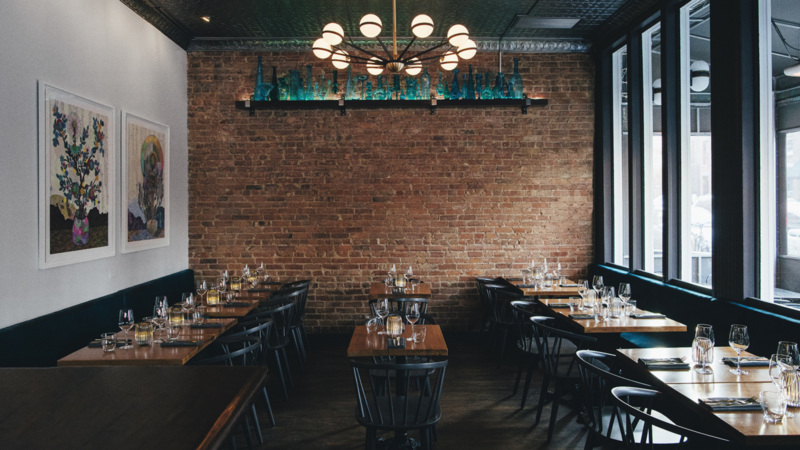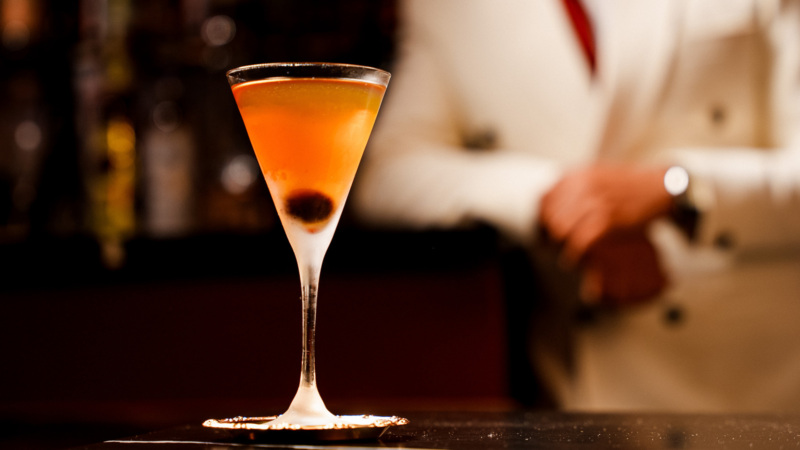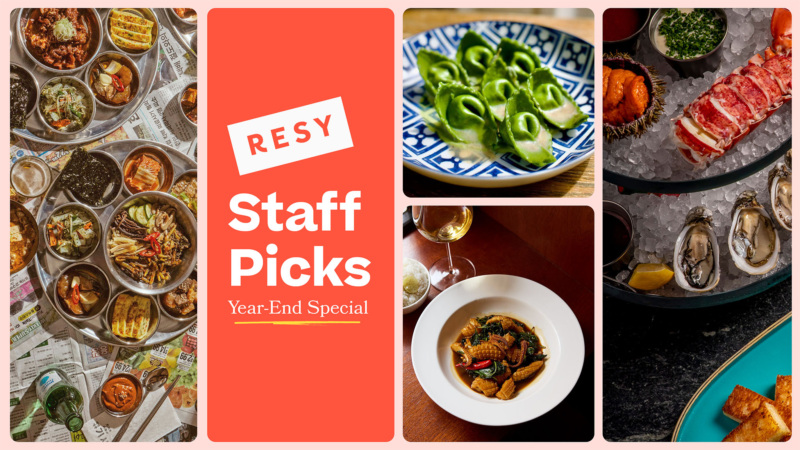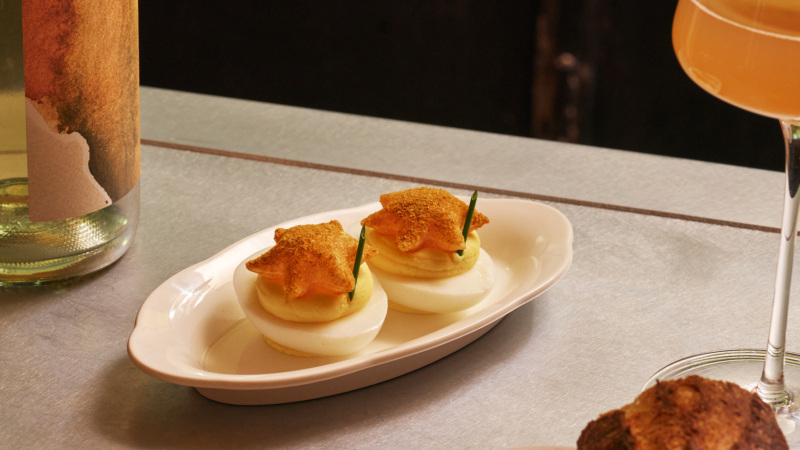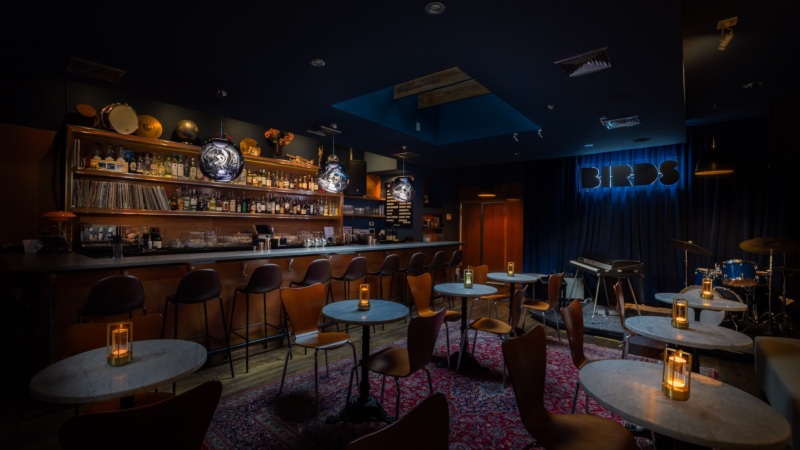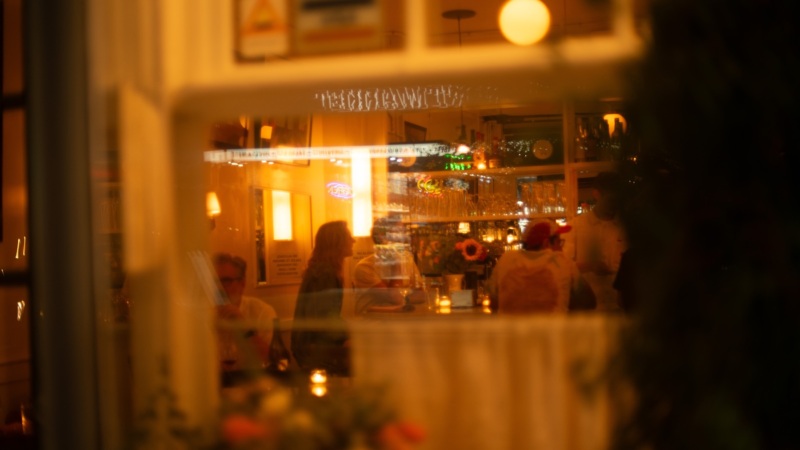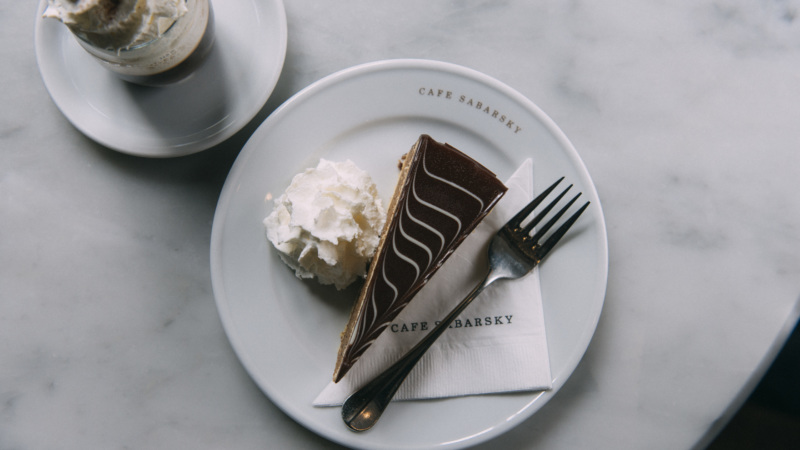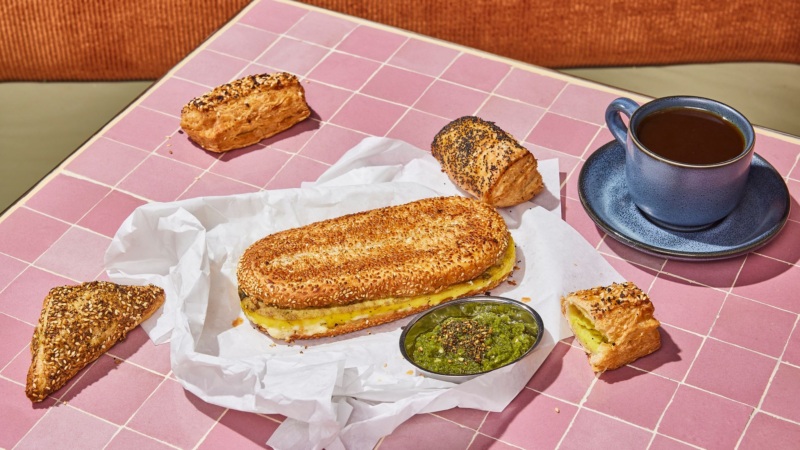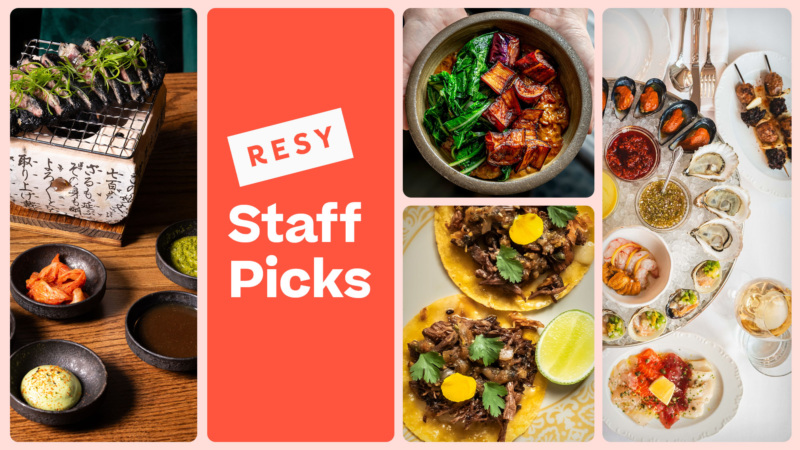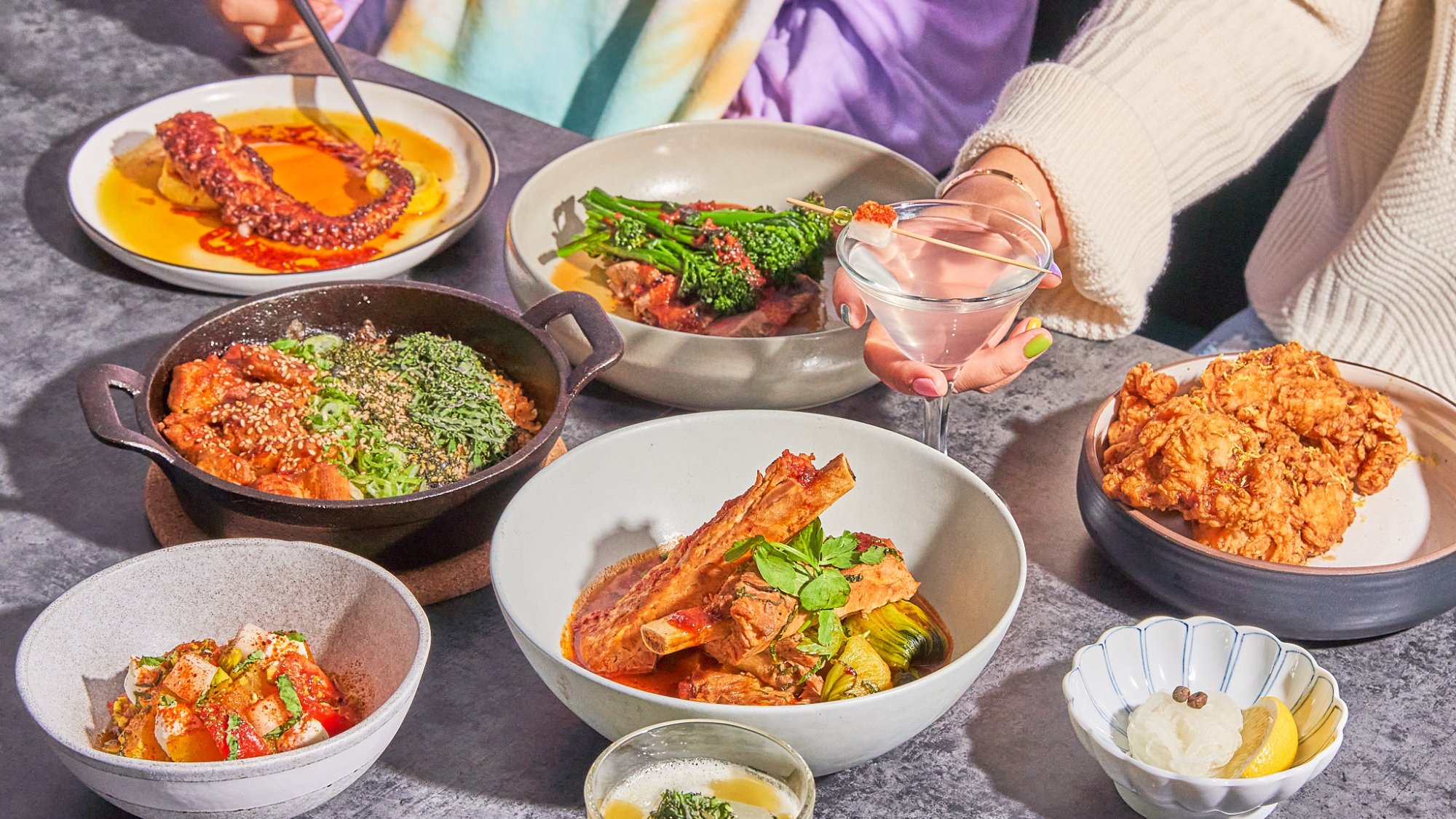
The Best Dishes to Get at 8282 in New York’s Lower East Side
Published:
Last fall, Jee Kim and Bong Le Jo launched their lighthearted, fresh take on Korean food inside the former Meatball Shop space on bustling Stanton Street on the Lower East Side. They named their restaurant 8282, an allusion to Korea’s international telephone code +82 which, when recited consecutively, translates to a Korean phrase meaning “quickly” or “faster.” In restaurant parlance, this signifies the same get-it-done attitude that both Jo and Kim possess.
Here, Kim, the marketing arm of the operation, and Jo, the person responsible for everything coming out of the kitchen, are running a restaurant that feels true to their Korean heritage. Kim and Jo were both born in Korea and spent several of their formative years in the country before emigrating to the U.S. Prior to opening 8282, they ran Pado, a Japanese restaurant in the East Village that closed in the fall of 2020.
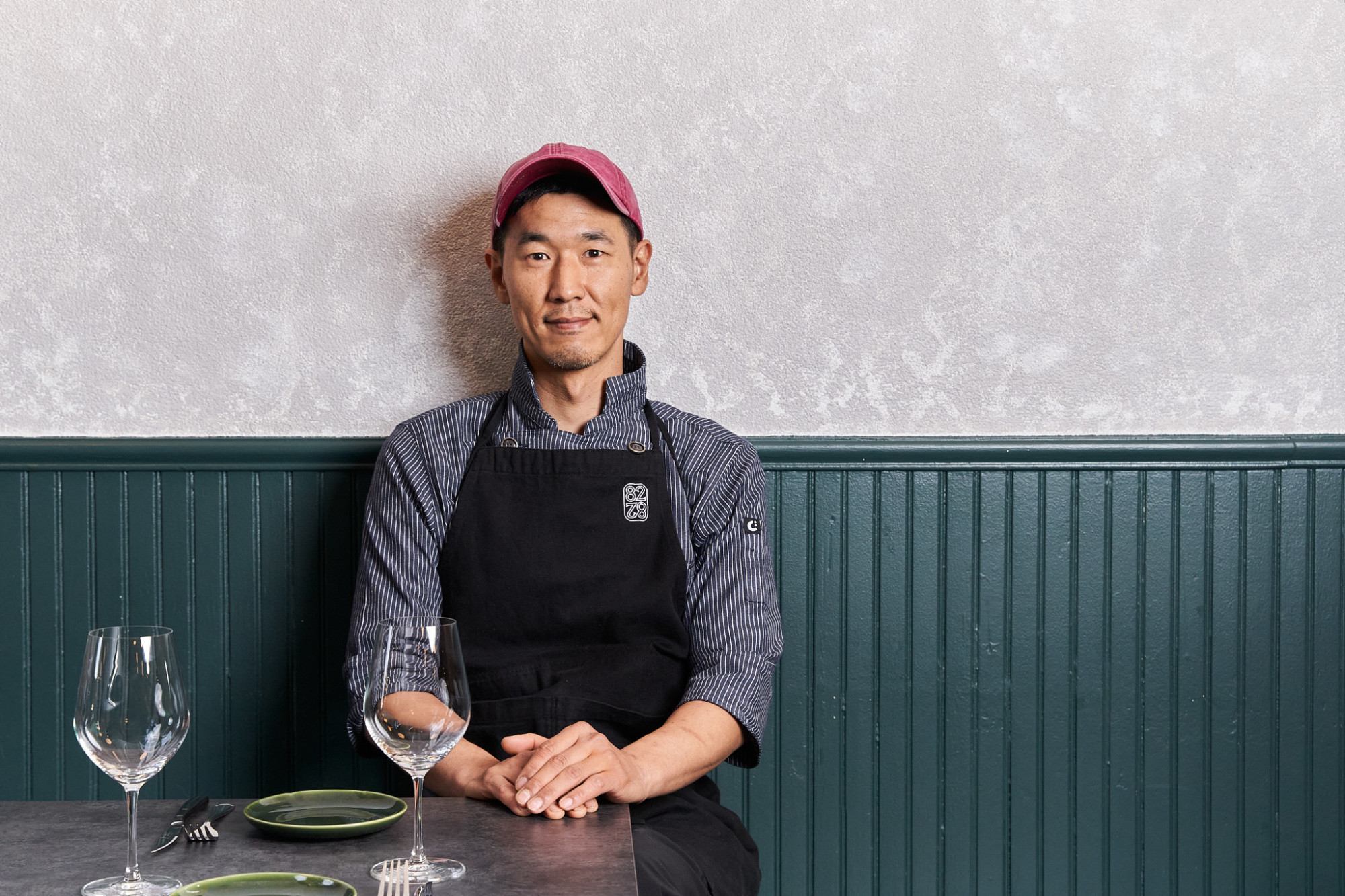
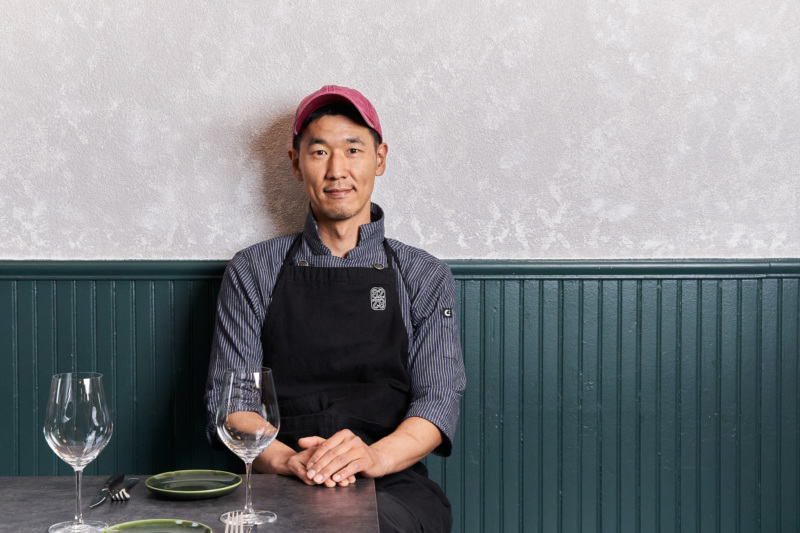
Korean cuisine’s rich and diverse foundation are the inspiration for the cooking they’re executing at 8282. “We wanted to do something that wasn’t fine dining, but also is elevated,” Kim says of the couple’s venture. In recent years, New York’s Korean food scene has expanded well beyond the ubiquitous Korean barbecue spots found in the city’s Koreatown neighborhood, and Kim says diners’ embrace of modern Korean cuisine inspired the duo to boldly create a space to show the city yet another side of Korean food. “Korean food is not just the fried chicken and bibimbap and the barbecue, which are all really great things, but there’s just a lot more to [it],” Kim says. “Finding Korean ingredients and flavors that hit home to us and finding a balance with ingredients that are most familiar to New Yorkers were key in building our menu.”
Together, they want to challenge expectations around what the Korean dining experience is, and in dishes such as L.A. Iberico Pork Galbi and Jjajang Bori-Bap, they’re serving up a new kind of fusion cuisine that’s distinctly Korean American. The Korean flavors on display will easily be “recognized by people who are already familiar with Korean food,” Kim says, but they’re also hoping “new and interesting ingredients and flavors” will have the effect of “pleasantly surprising [diners].” Here, chef Jo takes us through five of their standout dishes.

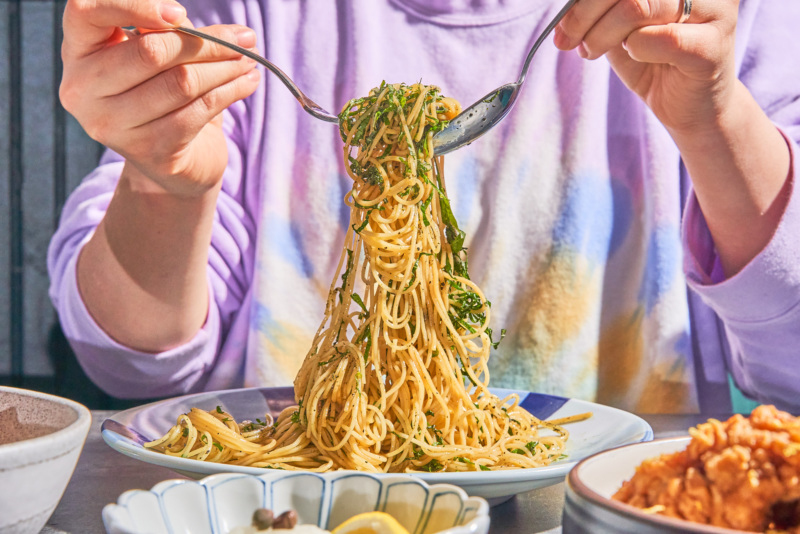
1. Perilla Oil Pasta
“Growing up, I really disliked vegetables. My mom used to [make] meats with either bulgogi or galbi and put [out] lettuce and perilla leaves for ssam — to make me eat vegetables. The only loose-leaf vegetable I really enjoyed was perilla, for its taste and texture. Perilla leaves have a distinct taste, that’s both nutty and herbal. [They’re] shaped like a spade and are similar to Japanese shiso, but larger and much less potent. The flavors add umami and fragrance [to the] meat.
Fast-forward about 20 years, and I am still in love with perilla leaves and perilla oil. This was one dish I really wanted us to explore and introduce to New Yorkers — to share my love for perilla leaves. We buy perilla oil on the shelf; it is made from roasted perilla seeds, similar to sesame oil.
In Korea, there’s a more traditional dish with perilla oil and buckwheat noodles called deulgireum mak-guksu. At 8282, we use angel hair pasta instead of buckwheat, as the sauce and texture combine beautifully together along with the thinly shredded perilla leaves. This dish also has the option to be topped with uni, which we highly recommend. It’s mixed in with our slightly sweet, soy-based sauce. The angel hair pasta is tossed with [this] special sauce, seaweed crumbs, scallions, and shredded perilla leaves. The uni adds to the nuttiness and the buttery texture, and the flavor pairs well with the sauce and perilla leaves.”
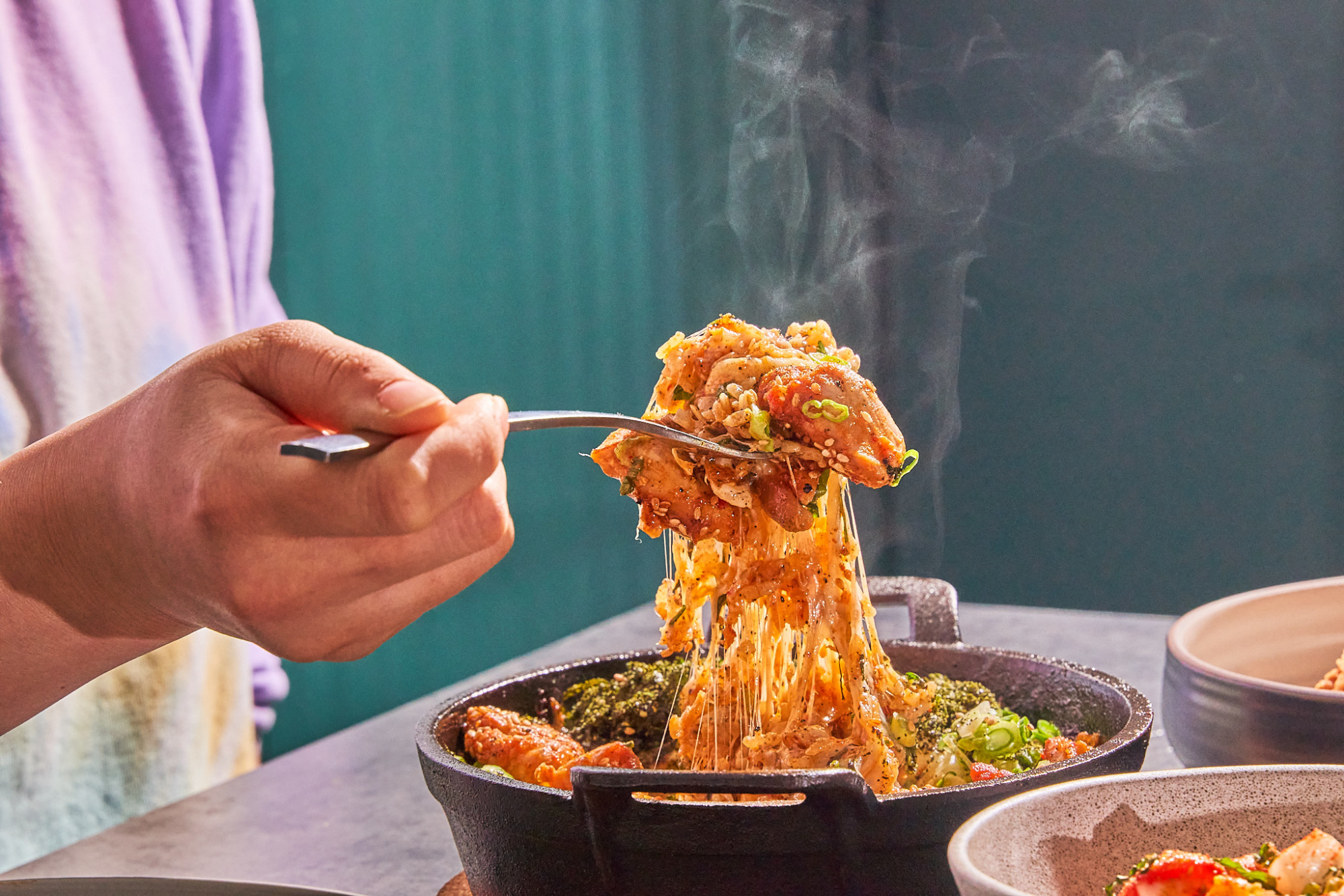
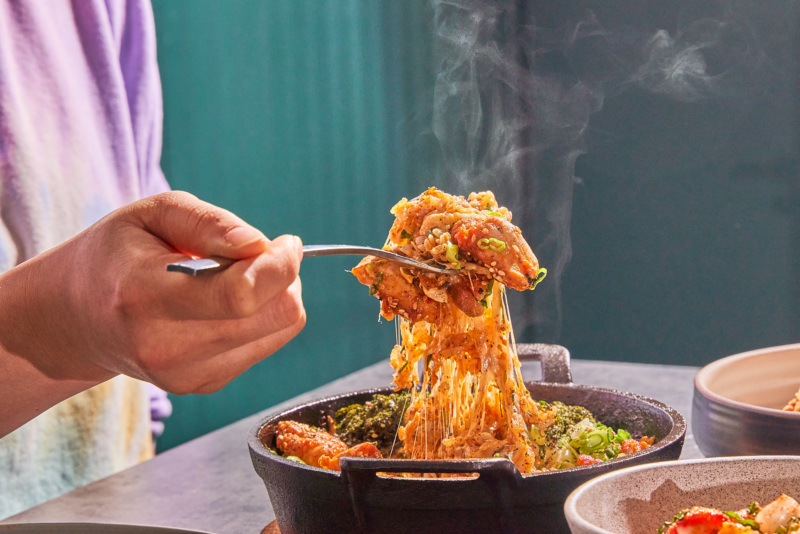
2. Dakgalbi Kimchi-Bap
“Dakgalbi translates [as] marinated chicken. Our spin on the traditional dakgalbi is first, how we plate it on the sizzling plate, instead of on a barbecue grill, and secondly, how we serve it on top of kimchi rice. Dakgalbi is a staple Korean dish derived [from] and still famous in a city called Chuncheon, going back to the ’80s.
[It’s] one of our most popular dishes at 8282. The chicken is cut from dark meats, brined in our special paprika brine for at least two days. [After it’s brined] it’s marinated in our gochujang sauce which is a mix of gochujang, two different types of red pepper powder, both fine and coarse, soy sauce, and sugar.
We make our kimchi in-house every two weeks, and ferment it so that we can be consistent in our flavors. It ferments more as it ages, becoming more acidic and tasting more like fermented vegetables. We then chop our kimchi of cabbage and radish into tiny pieces, then slow-cook it to make the base for the kimchi rice, which is rice mixed with the special kimchi sauce. The chicken is sauteed in the pan with the gochujang sauce and then we build the dish in layers.
Mozzarella cheese is layered in between the kimchi rice, and then it gets topped with the gochujang-marinated chicken, seaweed crumbs, scallions, and perilla leaves. It is served sizzling and hot — the cheese pull is an absolute must!”
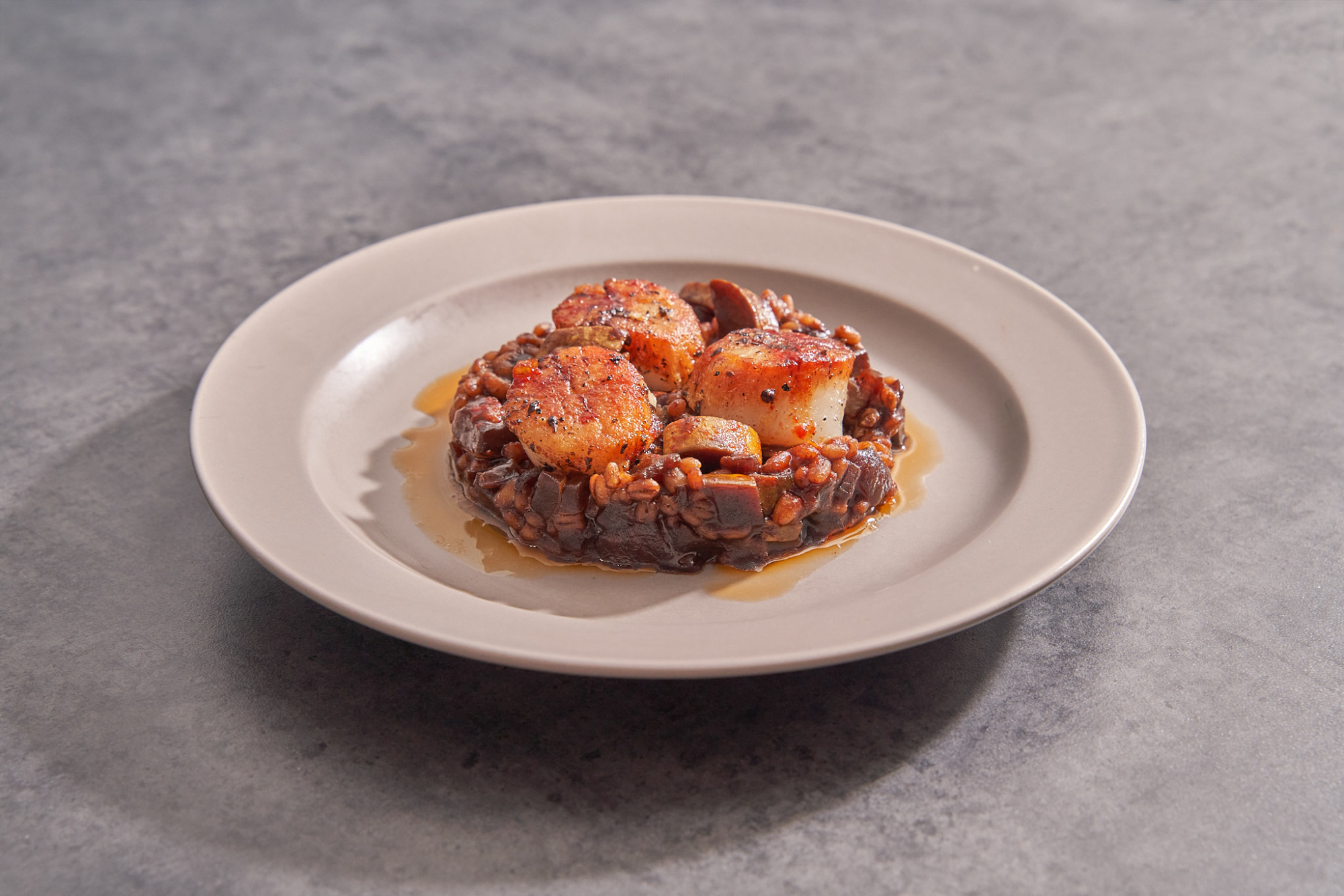

3. Jjajang Bori-Bap
“The history of Korean Chinese cuisine in Korea dates back to well before the 19th century when the first Chinatown was introduced in Korea. Because of our rich history and cultural melange, Korean Chinese food reminds many Korean people of home and their childhood. This dish is derived from my memories of our soul food, jjajangmyeon. Jjajangmyeon noodles, or jjajang-bap, with rice, are both made with black bean sauce and various vegetables, and they are the dish Korean people would call out to when they crave Korean Chinese food.
We make our version with barley instead of white rice, for extra texture and bounce; we mix barley with our jjajang sauce, which is composed mainly of black bean paste and onions. The key is in how well the onions are prepared [because] the onions add sweetness to the sauce, which pairs incredibly well with the scallops that are sauteed in the truffle paste.”
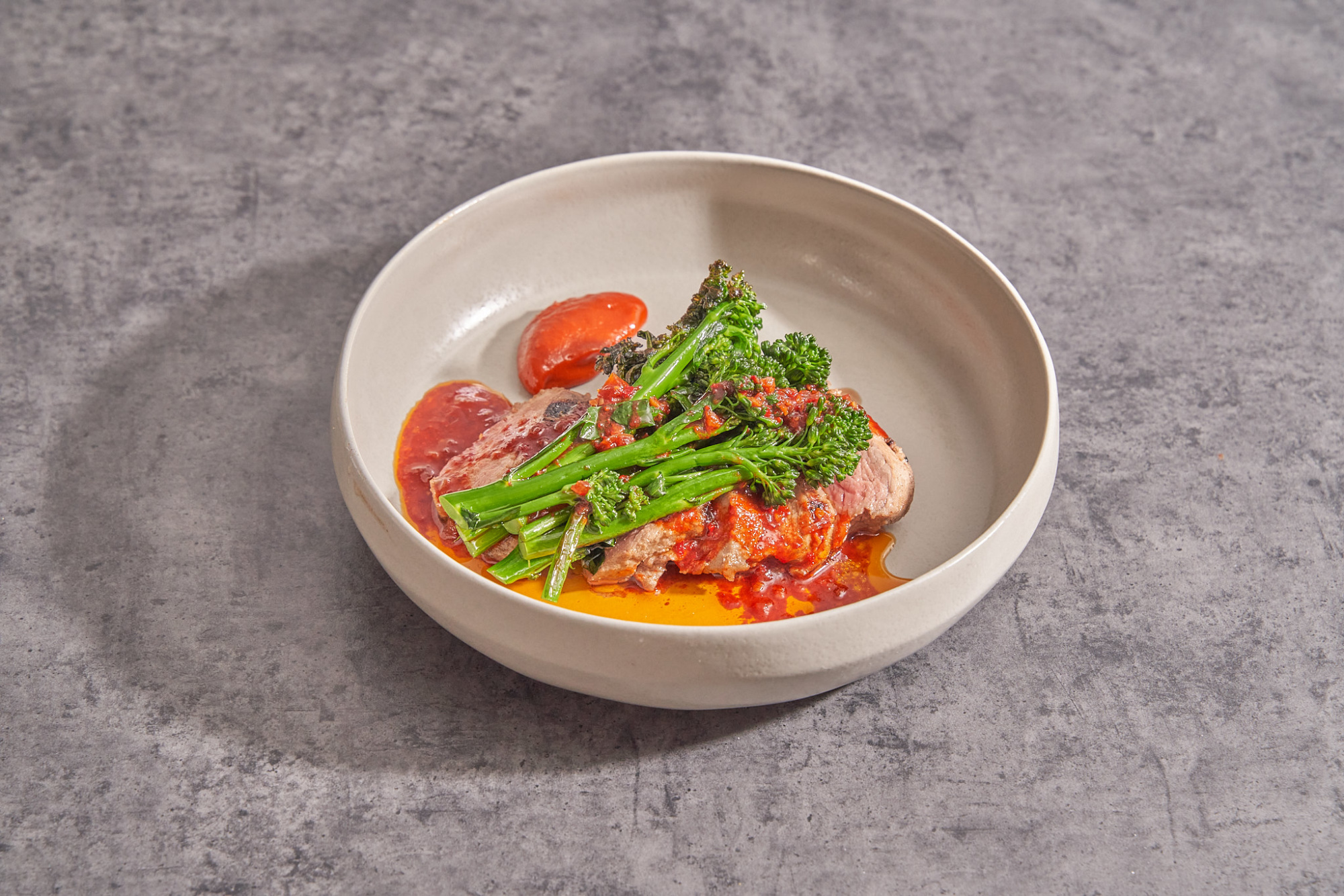
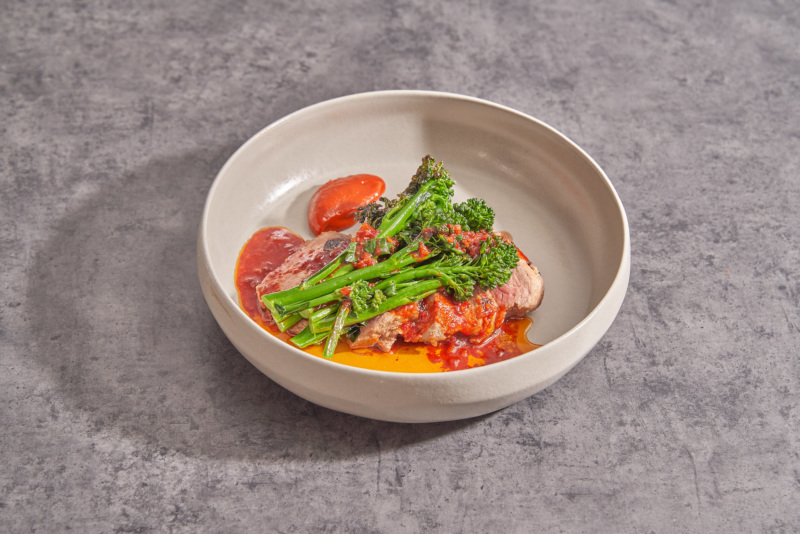
4. L.A. Iberico Pork Galbi
“Los Angeles — after the Motherland, of course — serves some of the best, most authentic Korean food in the world. Galbi is this relatively expensive cut of meat, and it’s the name of the short ribs that Korean Americans began sourcing out in L.A.; they are cut thinner than the average American steak is cut. Korean people love marinating their meats with their galbi sauce, and when L.A.’s Korean restaurants began marinating the short ribs, it gave rise to the term ‘L.A. galbi.’ Marinating [first existed in] Korean cuisine as a way of preserving [meats], but now it’s really for the flavor. There are many different ways to marinate, but L.A. galbi sauce is a soy-based sauce.
Our dish pays homage to [traditional galbi] but at the same time, we wanted to use a pork meat that was fatty but not as fatty as the belly. With the Iberico pork end loin, we marinate the meat in our special galbi sauce for at least two days. The short ribs are grilled and then topped with our ssamjang sauce, which is a buttery mixture of doenjang, a fermented bean paste, and gochujang, a fermented red pepper paste. We serve the short ribs with broccolini that we’ve blanched and sauteed and we top that with a red pepper vinaigrette [that] pairs beautifully with the meat and gives it a slight kick.”

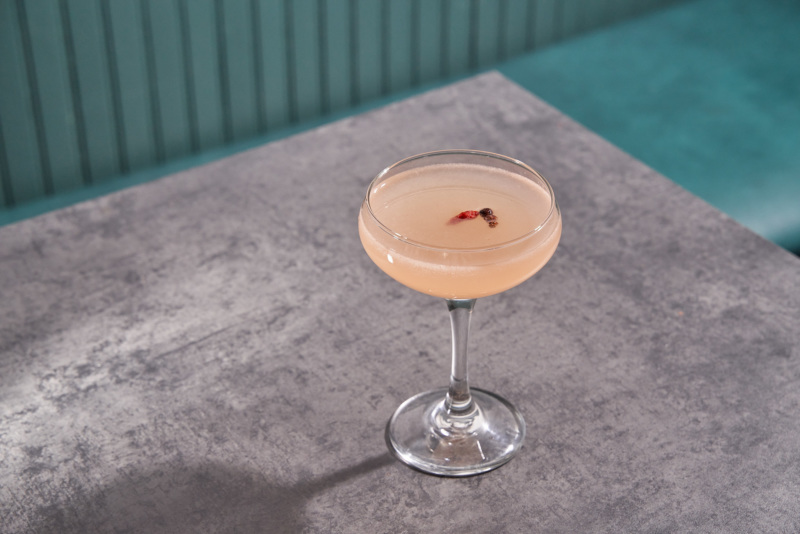
5. Miss Mija, O
“Omija berries, or magnolia berries, are very popular in Korea. These berries are known to have great health benefits, [are] full of vitamin C, and are used to garnish tea or other refreshing beverages. [We make] omija syrup from omija and goji berries and simple syrup. Mija is an old-school Korean female name, sort of like ‘Agnes,’ and we thought it’d be fun to give character to the name and the cocktail, as Oh is also a Korean last name. We make the tincture in-house, and infuse the vodka with omija and goji berries. This drink is refreshing, slightly sweet and tart, and pairs well with all of our dishes, especially the snow dansewoo crudo or the L.A. iberico pork galbi.”
8282 is open from 5:30 to 10:30 p.m. Wednesdays through Sundays.
Stacey Lastoe is a freelance writer and editor broadly covering travel, food and drink, and wellness. She lives in Brooklyn with her husband Steve and hound dog, Odie. Follow her on Instagram and Twitter. Follow Resy, too.

